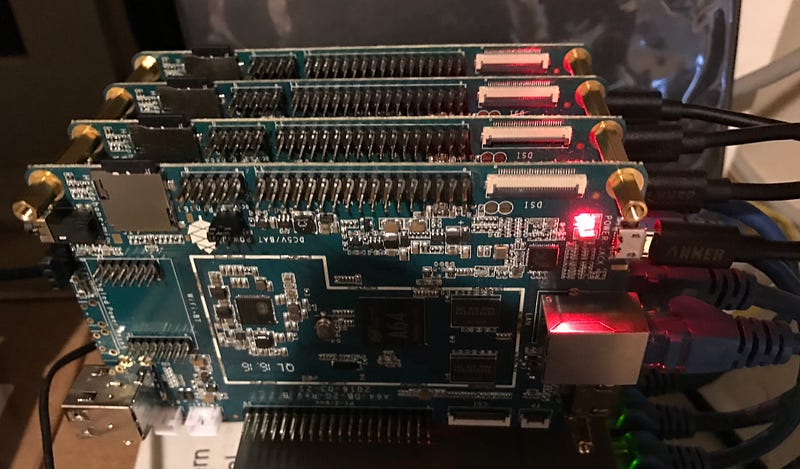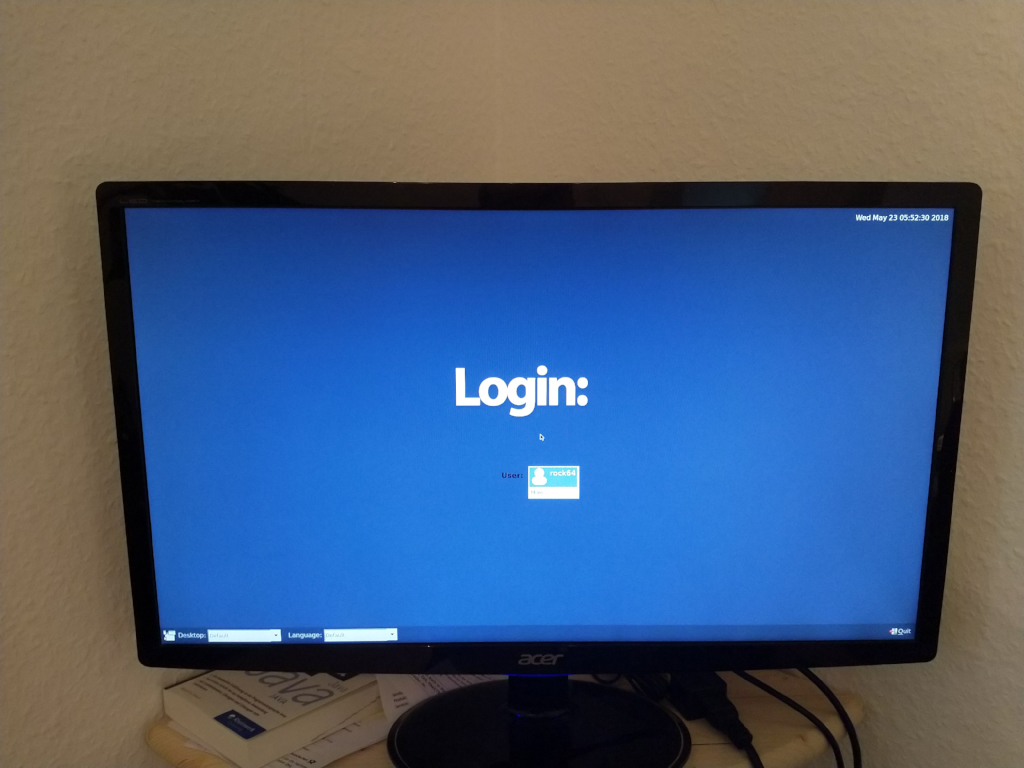OpenSuse auf RockPro64 V2.1
-
Hat hier jemand openSuse auf dem RockPro64 V2.1 laufen? Ich habe u-boot von hier installiert:
Flashing U Boot to SPI
"Das U-Boot" Source Tree. Contribute to sigmaris/u-boot development by creating an account on GitHub.
GitHub (github.com)
kann aber kein ARM64 ISO starten. Nach : "Loading initial ramdisk ..." kommt nichts mehr oder nur ein kurzer Boot-Versuch.
CentOS von hier geht:

Centos 7 distributions for Pine64, Rock64, Rock64Pro
Everything running Kubernetes on Aarch64/ARM64 architectures. The project aims to support the Fabric8 CI/CD and iPaaS applications deployed on ARM64.
Project31 (project31.github.io)
Ist aber ein 4er Kernel.
Was kann ich machen? Ich würde dann auch gerne EEPROMs an die Leisten meiner NanoPi M4V2 löten und diese mit U-Boot ausstatten. Allerdings wird das sicher aufwand.
BTW, jedes Armbian Update eines meiner RK3399 Boards hat mir die GUI zerschossen, weshalb ich kein Armbian drauf haben möchte.
-
Hat hier jemand openSuse auf dem RockPro64 V2.1 laufen? Ich habe u-boot von hier installiert:
Flashing U Boot to SPI
"Das U-Boot" Source Tree. Contribute to sigmaris/u-boot development by creating an account on GitHub.
GitHub (github.com)
kann aber kein ARM64 ISO starten. Nach : "Loading initial ramdisk ..." kommt nichts mehr oder nur ein kurzer Boot-Versuch.
CentOS von hier geht:

Centos 7 distributions for Pine64, Rock64, Rock64Pro
Everything running Kubernetes on Aarch64/ARM64 architectures. The project aims to support the Fabric8 CI/CD and iPaaS applications deployed on ARM64.
Project31 (project31.github.io)
Ist aber ein 4er Kernel.
Was kann ich machen? Ich würde dann auch gerne EEPROMs an die Leisten meiner NanoPi M4V2 löten und diese mit U-Boot ausstatten. Allerdings wird das sicher aufwand.
BTW, jedes Armbian Update eines meiner RK3399 Boards hat mir die GUI zerschossen, weshalb ich kein Armbian drauf haben möchte.
-
Bootet auch nichtg durch. Ist langsamer beim Bootversuch als mein Amiga von Diskette und gibt dann irgendwann etwas von "Bug Kernel image not alligned to 64k" aus.
Wo kann ich ein 5er Image mit ayufan Kernel runterladen? Das waren die Einzigen, die wirklich zuverlässig sind. Selbst mein Fedora auf dem Odroid H2+ spuckt beim Booten etwas von Page Table State Bugs aus bootet aber durch. Und nachdem ich den Audio Silent Stream abgestellt habe, kann ich auch den Monitor mit meinem KVM Switch umschalten.
Ich glaube, ich probiere mal wieder ein BSD, bis ich Antwort von Dir habe.
-
-
-
-
-
stretch-minimal-rockpro64
Verschoben Linux -
bionic-minimal-rockpro64
Verschoben Linux -
-
bionic-containers-rockpro64
Verschoben Linux
